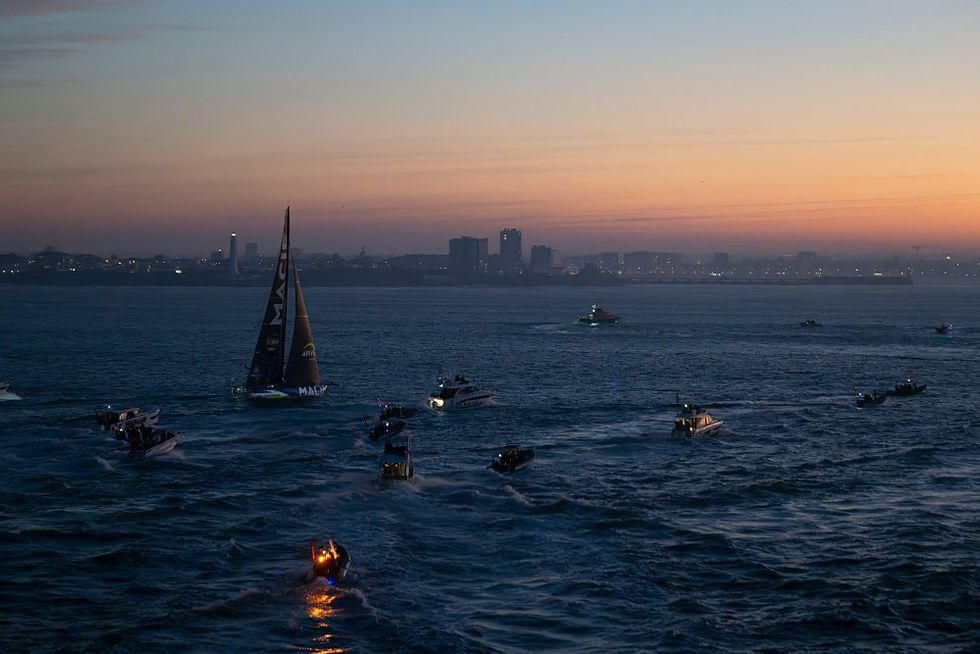Tennis Star Rafael Nadal Retires
- Chloe Belga

- Oct 15, 2024
- 3 min read
` “In this life, everything has a beginning and an end. And I think it's an appropriate time to put an end to a career that has been long and much more successful than I could have ever imagined” is what thirty-eight-year-old Rafael Nadal said when announcing his retirement on October 10, 2024. His illustrious tennis career will thus conclude with the Davis Cup in Malaga in November, where his last moments playing professionally will be for his country, Spain. While his athletic accomplishments are extraordinary, in truth, it is the philosophy he represents that will remain in the public’s collective memory, and ultimately differentiate him from any other tennis player in history.
Regarding his career, it is primarily shaped by superlatives: one of the most precocious tennis players (youngest man to achieve the Career Slam, i.e. winning all four Grand Slam tournaments, by age 24), the most determined, most hell-bent player, and the player who set the greatest challenge perhaps in all sports history—the one most likely to never get broken—that is, winning Roland-Garros, the most physically demanding of the slams fourteen times. For context, the previous record held for many years by tennis legend Bjorn Borg was already considered very difficult to beat. Borg had won it six times. Beating the record of fourteen times would mean not only having to start winning very young, but consistently as well. Furthermore, it was calculated that Nadal has had a 97.4% match-winning percentage there. Hence, now, the following anecdote from 2004 seems quite silly. In the 2004 Davis Cup final, Spain had decided to replace Ferrero, who was the 2003 Roland-Garros winner, with eighteen-year-old Rafa Nadal. Andy Roddick, World No.2, upon hearing this, was ecstatic: “The happiness that I felt because they subbed in Rafa Nadal to play against me on clay, in Spain…” Roddick reminisced, realizing how ridiculous it sounds today.
Moving away from his indisputably historical achievements on clay, to understand what makes Nadal truly unique in his discipline requires an understanding of what tennis encompasses.
Imagine. You’re facing two opponents. The first is across the net. The second is yourself—you’re on your own, dealing with your mistakes, your thoughts, and growing in intensity as the match progresses. Professional matches can sometimes last up to three hours, or even five, and the result can then be in the hands of just a couple of seemingly small points. Technique, tactic, endurance, and utter concentration therefore all have to come together at once.

Rafael Nadal, Getty Images, 2024.
This is where Rafa Nadal excelled like nobody else—in the mental aspect. He was known to fight for every point, driven by some Hemingway-ish toreador’s passion. Better than any player, he was able to erase the previous point from his mind to focus on the next, even when it was an unfair call; he played point by point to an extreme. Such an attitude can easily be reflected in people’s daily lives for more mundane tasks. Moreover, while the vast majority of tennis players, if not all, lash out, breaking under the psychological intensity of the match, and have all, at least once, angrily broken their racket, Nadal has never done so, and has never thrown anything out of anger. He stays composed. The respect ingrained in him is also present in all aspects of his life, as off the court, it is maintained that even with fame, he has remained simple and approachable. These values he embodies, and of course, the imprint he left on Roland-Garros, led him to notably be the only non-French person to carry the 2024 Olympic flame during the very last minutes of the opening ceremony.
Furthermore, as supported by the reoccurring, serious injuries the tennis star has often had to come back from, he has always followed a kind of stoic philosophy. Seneca, in his Letters from a Stoic, wrote, “Do not go out of your way to make your troubles any more tiresome than they are and burden yourself with fretting [...] Everything hangs on one’s thinking” (146). And his thinking is exceptional. After having won his first Roland-Garros, Nadal was diagnosed with a rare foot deformity, and was told, at just eighteen, that his career was over. Yet, this didn’t stop him in the slightest. He once said, “I learned during all my career to enjoy suffering.” While one can still wonder how many more slams he could have won if he had had a healthier body, Nadal likely isn’t wondering that at all—because, to him, it is what it is, and he absolutely made the most of it. It is his attitude, his unrelenting spirit, that holds him in such high esteem vis-à-vis the public, and it is the reason why he is perpetually praised as the ideal example for younger generations.

Rafael Nadal with his Gold Medal won at the 2008 Beijing Olympics, First Sportz.





Comments